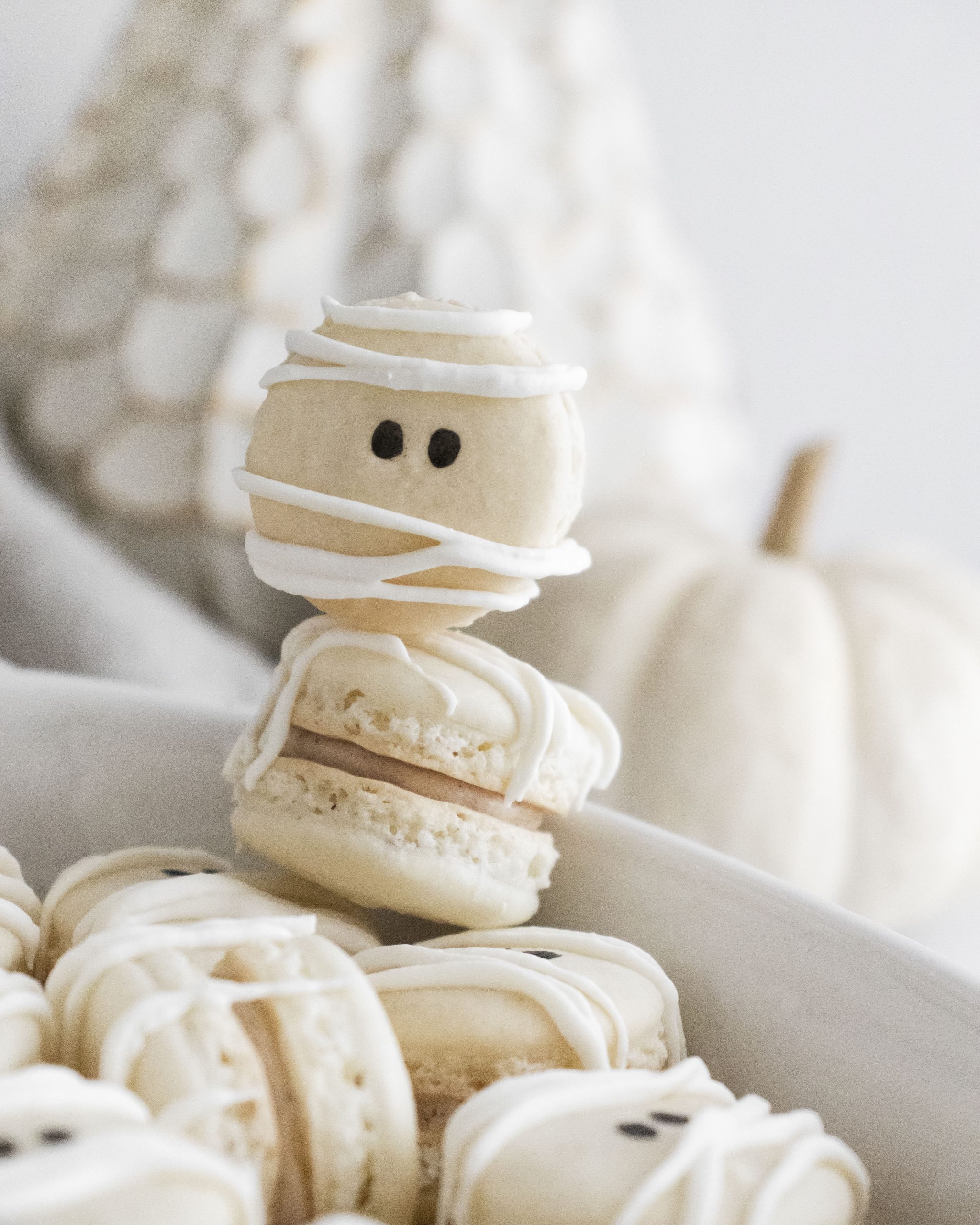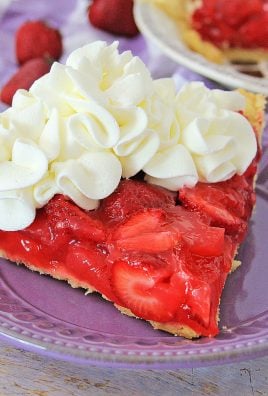Dill Pickle Bread
Dill pickle bread is a delectable combination of briny pickles and fresh baked bread. It’s delicious on its own with a smear of butter or as the best sandwich bread ever!
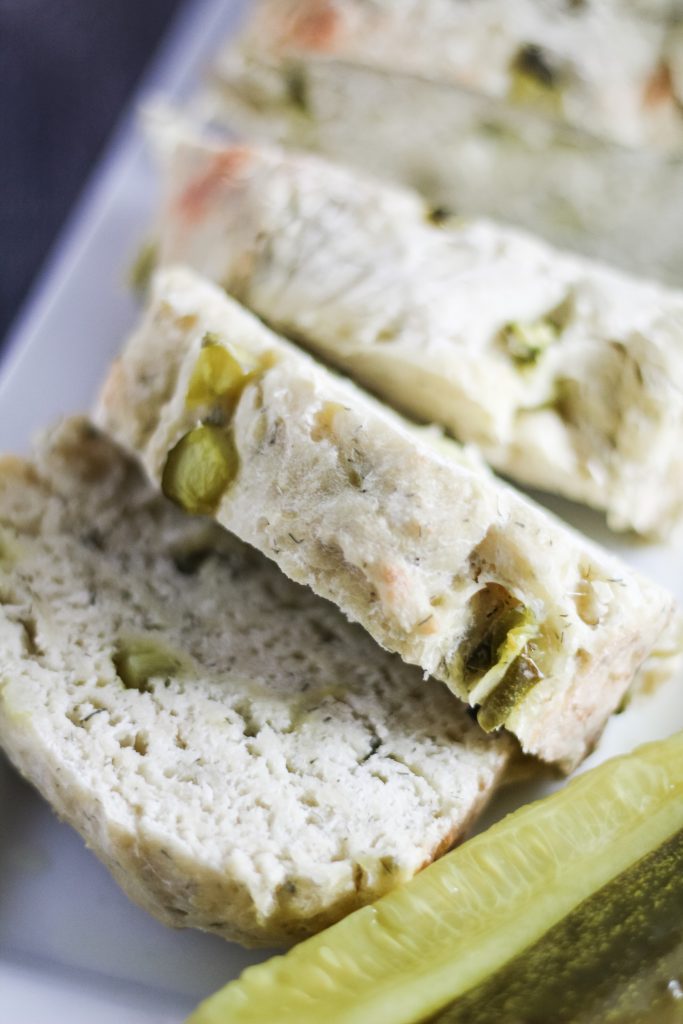
My boys are huge fans of dill pickle everything.
We always have a big jar of dill pickles in the fridge and I love to turn them into yummy dishes.
Think dill pickle grilled cheese sandwiches, chicken salad, pasta salad, dip… The sky’s the limit!
And what better way to really take a dill pickle grilled cheese or dill pickle chicken salad sandwich over the top than with freshly baked pickle bread?
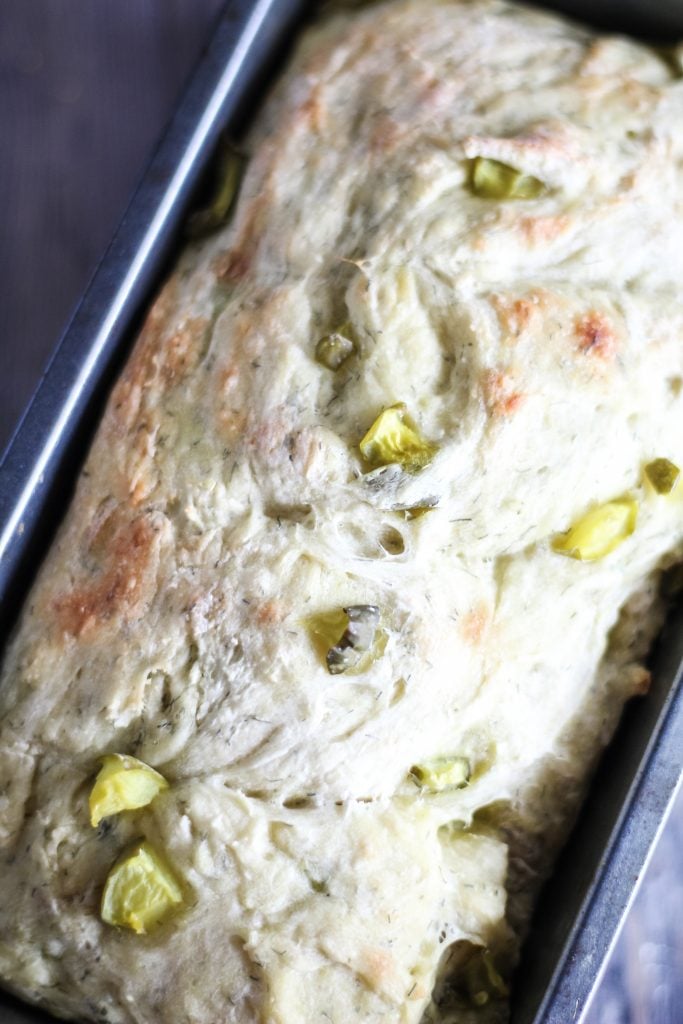
What You Need
To make this you need:
- warm dill pickle juice- you want it to be about 110 degrees
- a dill pickle- finely chopped
- olive oil- extra virgin is what I recommend
- dill weed- dried, you can sub fresh but you will need much less
- sugar
- salt
- bread flour – or unbleached all-purpose flour
- instant active dry yeast
- cornmeal or nonstick spray
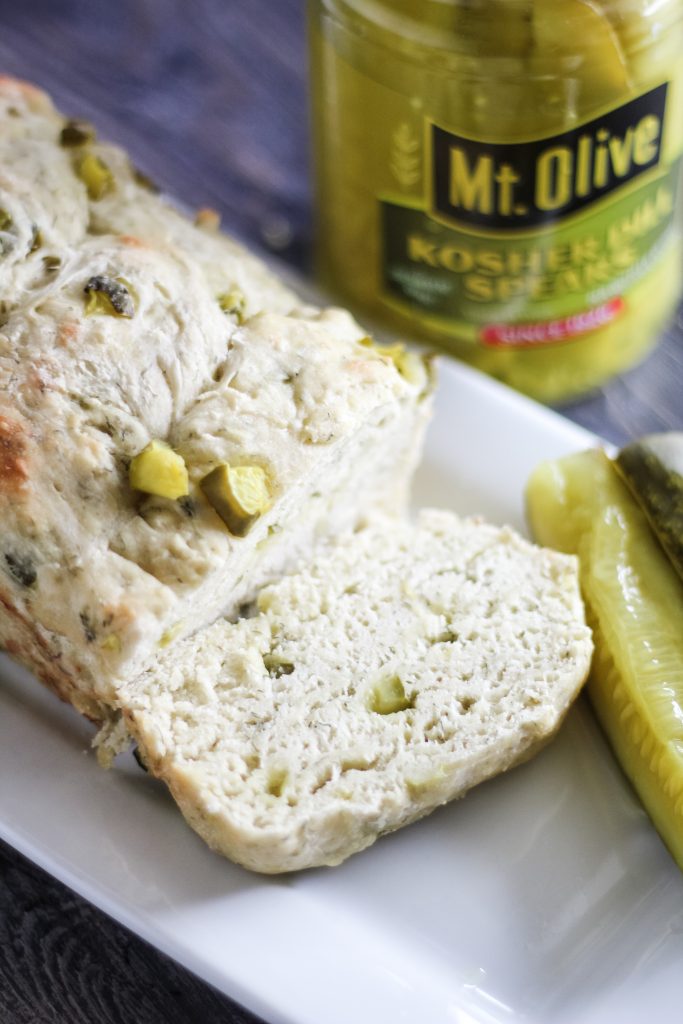
How to Make
Making this bread is very easy.
You don’t have to proof the yeast first. Basically it goes right into the mixer and then rises.
To make it, start by adding all the ingredients to the bowl of a stand mixer.
Use the dough hook attachment to mix the ingredients together until you have a dough ball.
Let the mixer keep going until the dough ball is mixed well and elastic or stretchy. This should take about 8-10 minutes.
Once you’ve mixed the dough for to get the right amount of elasticity, cover the bowl tightly with plastic wrap and let it rest for 15 minutes.
After the dough has rested, turn the dough out onto a lightly floured surface by folding the dough in on itself and forming an envelope.
Seal the seam as best you can.

Sprinkle cornmeal or heavily spray a 9×5″ baking dish with non stick cooking spray.
Put the dough in the prepared dish, making sure to put the seam side down.
Cover the baking dish with plastic. Let the dough rise again for about 20 minutes.
Then remove the plastic and bake at 400° for 23-25 minutes, or until a toothpick inserted in the center comes out clean and the top is golden brown.
When this happens, remove the bread from the oven, and let it rest for 10 minutes.
After the bread has rested, release the loaf from the pan by running a bread knife around the edges.
Transfer the loaf to a wire cooling wrack to cool. Slice and serve.
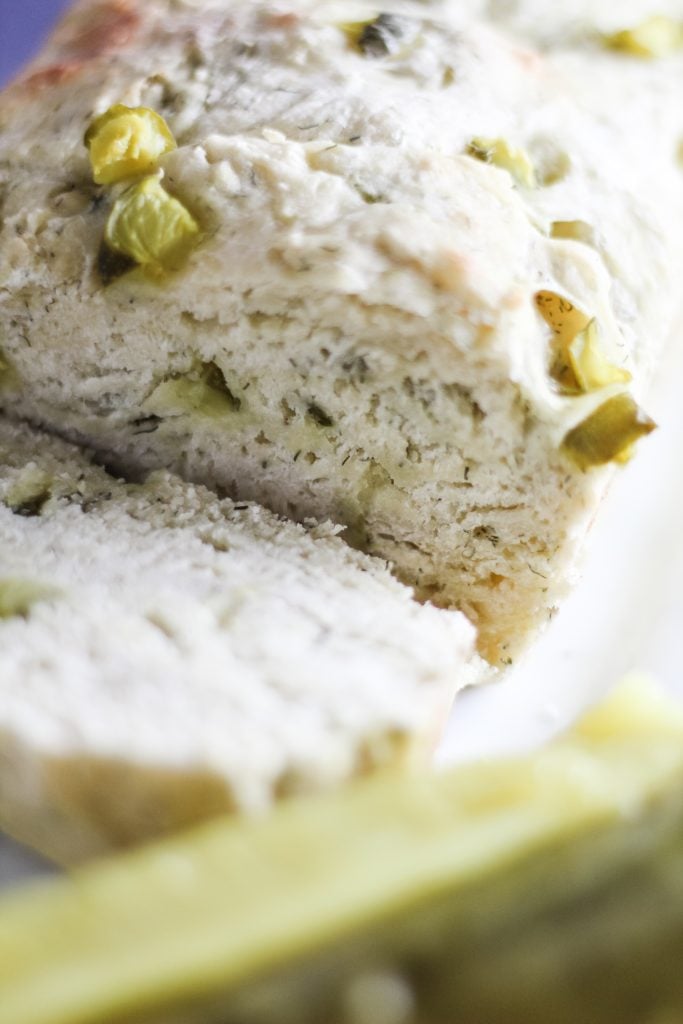
I’m worried my bread won’t rise. Help!
As long as you use warm pickle juice and your yeast is active it should rise.
If you need are worried because your kitchen is chilly, you can do an oven rise.
What is oven rising?
Sometimes I use my oven for the rising especially in the winter when my kitchen is colder.
To use the oven to let your dough rise, turn the oven onto warm for a minute or so, then turn it off again. That’s it!
This trick warms the oven and make it a great environment for rising bread.
Do keep in mind, that if you can not comfortably press your hand against the inside of the oven door, the oven is too hot and will start to bake the bread.
If that happens let the door stand open to cool a bit.
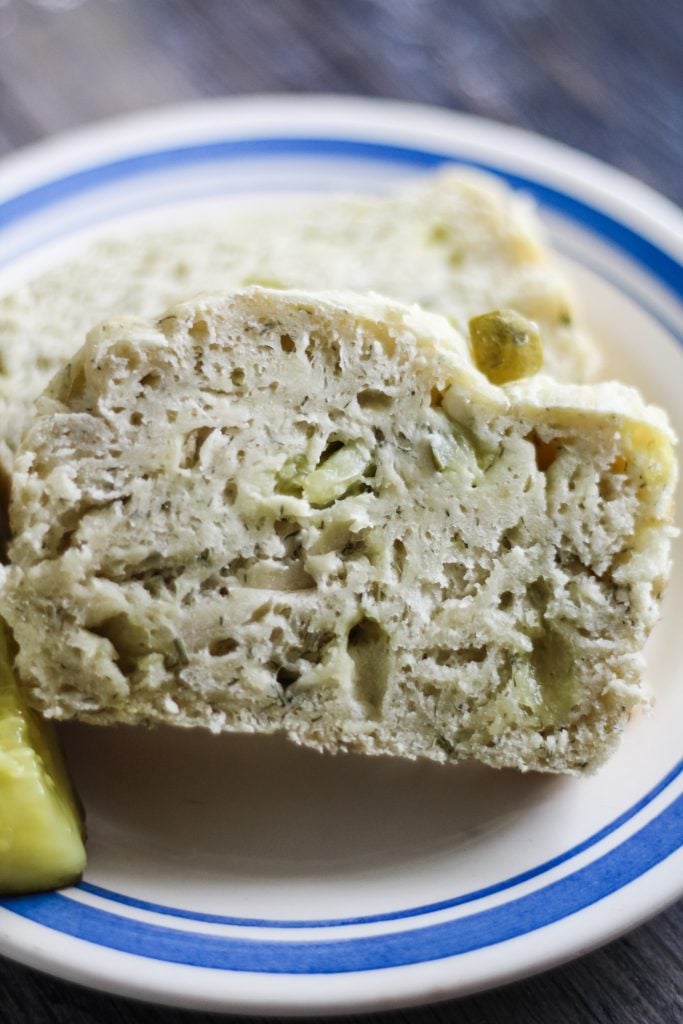
I want to make this bread, but I don’t have time now to wait for it to rise. What should I do?
Do a cool rise!
If I don’t have time right after baking or if I start putting the dough together and get interrupted, which happens a lot with 4 kids, then I do a cool rise.
A cool rise is when the dough is place in the refrigerator and left to rise slowly over night approximately 8 to 12 hours.
I usually do this after the first rise and the dough has been shaped into a loaf.
After 8-12 hours, I pop it the oven and bake it as normal.
Tips and Tricks
- Don’t overwork your dough! If you overwork the dough the gluten will seize up and the bread will be tough. You’d have to mix the dough for a much longer time than 8-10 minutes.
- It’s crucial that the pickle juice be around 110 degrees. If it is too cool, the yeast won’t wake up whereas if it’s too warm, you’ll kill the yeast.
- If you’re concerned the dough seems too sticky or wet, add an extra tablespoon or so of flour. Don’t add more than 1 tablespoon at a time.
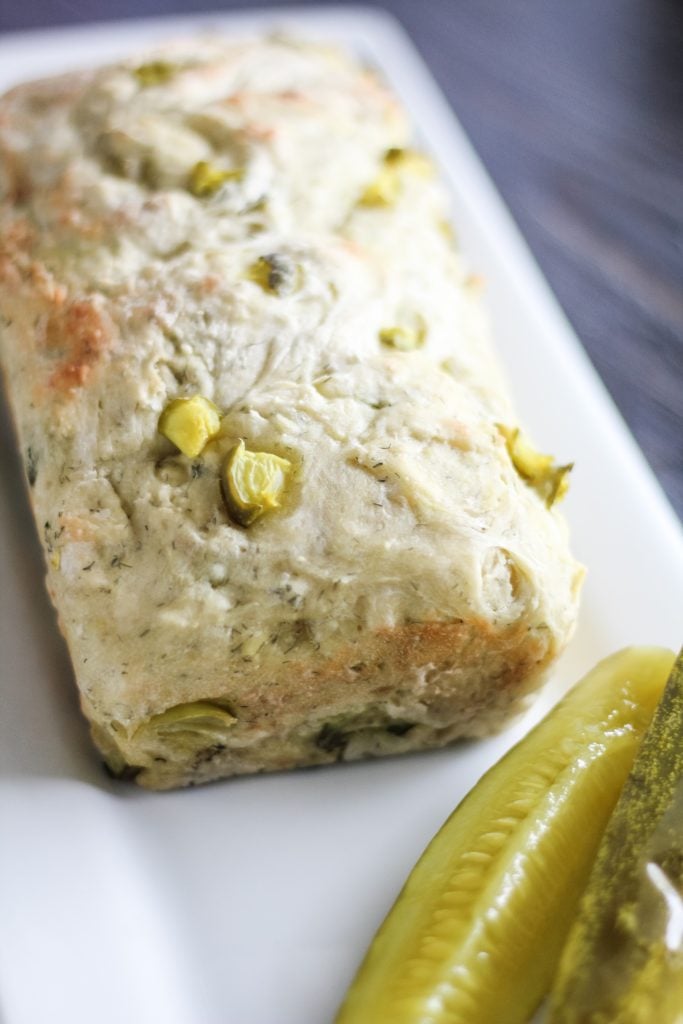
Other Interesting Bread Recipes
We love making this dill pickle bread to jazz up our sandwiches. Make some before your next grilled cheese night and enjoy!
- Pepperoni Pizza Pull Apart Bread
- Crockpot Rosemary Olive Oil Bread
- Cheesy Bacon Jalapeno Popper Beer Bread
If you’ve tried this PICKLE BREAD, or any other recipe on the site, let me know in the comment section how it turned out, we love hearing from our readers! You can also follow along with me on PINTEREST, FACEBOOK, and INSTAGRAM to see more amazing recipes and whatever else we’ve got going on!
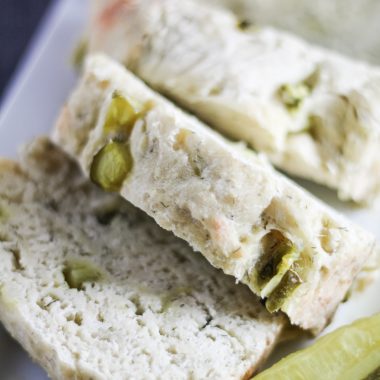
Dill Pickle Bread
Ingredients
- 1 cup dill pickle juice lukewarm (110 degrees F.)*
- 1 large dill pickle finely chopped
- 1 tablespoon olive oil extra-virgin
- 1 tablespoon dill weed dried
- 1 tablespoon granulated sugar
- 1/4 teaspoon salt
- 3 cups bread flour or unbleached all-purpose flour
- 3 teaspoons instant active dry yeast
Instructions
- Add all of the ingredients to the bowl of a stand mixer.
- Using the dough hook attachment, mix the ingredients together until a uniform dough ball forms. Continue to mix until the dough ball is well mixed and has an elasticity to it.
- If you're worried the dough's too dry, you can add a tablespoon of flour to it, but be careful not to add too much.
- Continue mixing the dough for roughly 8-10 minutes, until it's fully aerated and has the desired stretch from the gluten being activated.
- Cover the bowl with cling wrap, and let it rest for 15 minutes. This is the rise time.
- Turn the dough out onto a lightly floured, flat surface.
- Fold the dough in on itself, forming an envelope. Seal the seam as best you can.
- Dust a 9x5" baking dish with cornmeal, or heavily spray with non stick cooking spray.
- Transfer the dough seam side down, to the prepared dish.
- Cover, and let the dough rise again, for roughly 20 minutes.
- Bake the dil pickle bread at 400° for 23-25 minutes, or until a toothpick inserted in the cetner comes out clean and the top's nicely golden brown.
- Remove the bread from the oven, and let it rest for 10 minutes. Run a bread knife around the edges to release the loaf.
- Transfer the loaf to a wire cooling wrack to finish cooling completely.
- Slice and serve.
Notes
- Don't overwork your dough! If you overwork the dough the gluten will seize up and the bread will be tough. You'd have to mix the dough for a much longer time than 8-10 minutes.
- It's crucial that the pickle juice be around 110 degrees. If it is too cool, the yeast won't wake up whereas if it's too warm, you'll kill the yeast.
- If you're concerned the dough seems too sticky or wet, add an extra tablespoon or so of flour. Don't add more than 1 tablespoon at a time.
Nutrition

